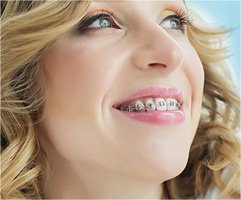 Caring for your gums is just as important as caring for your teeth. In dental care, you cannot do one and avoid the other because however healthy your teeth may be, if your gums are bleeding, sooner or later you’ll start complaining about aching teeth. Gum disease is an inflammation of the gum tissue. After time, it progresses to and affects the bone that surrounds your teeth. If left unchecked for a prolonged period of time, it can cause teeth to become loose and even fall out.
Caring for your gums is just as important as caring for your teeth. In dental care, you cannot do one and avoid the other because however healthy your teeth may be, if your gums are bleeding, sooner or later you’ll start complaining about aching teeth. Gum disease is an inflammation of the gum tissue. After time, it progresses to and affects the bone that surrounds your teeth. If left unchecked for a prolonged period of time, it can cause teeth to become loose and even fall out.
Caring for the gums
There are five basic ways of caring for the gums;
1. Eating right
2. Brushing regularly
3. Flossing at least once a day
4. Rinsing often
5. Regularly visiting your dentist
EAT RIGHT
Healthy gums starts with healthy eating. It is recommended that you eat a variety of foods while checking on your sugar and starch intake. Foods that are rich in sugars such as candies and chocolates produce a lot of acids in the mouth. And the longer they stay in the mouth, the worse the damage. That’s why “hard sucking candies” are considered some of the most dental-unfriendly foods.
The other reason why candies lead to most tooth decays is because people very rarely brush after snacking on them. You may also want to check your intake of potato chips, crackers, dried fruits, and raisins.
HOW TO BRUSH PROPERLY
The best time to brush is about 30 minutes after a meal. Normally, when you eat, acid in the food may cause the enamel to soften. Waiting for 30 minutes before you brush allows the softened enamel to re-harden. Proper brushing removes plaque which causes bacteria that leads to cavities.
Place a dab of fluoride toothpaste on a soft toothbrush, place the toothbrush t a 45-degree angle to the gum-line and gently move the brush across the teeth in a circular motion keeping the toothbrush along the gum-line. Click here for Brushing instructions.
Ensure to replace your toothbrush once every 3 to 4 months.
FLOSSING
Flossing gets rid of food that gets stuck between teeth where your toothbrush does not reach. The recommended frequency is once every day. Flossing also removes plaque.
The process involves wrapping an 18-inch strip of floss around the middle fingers of each hand and flossing gently starting with the top teeth then the lower ones. Push the floss between teeth and move it up and down, winding the used part of the floss on one finger as you proceed.
Click here for proper flossing instructions.
RINSE YOUR MOUTH OFTEN
Antibacterial mouth rinses are also known to reduce bacteria that cause dental problems according to the American Dental Association. Most mouth rinses contain fluoride that can help prevent tooth decay. However, fluoride mouth-washes are not recommended for children under 6 years. Your dentist will recommend how often you should rinse.
VISIT THE DENTIST REGULARLY
Though the recommended frequency is once every six months, see your dentist as often as possible especially if you’ve had dental problems in the past. Always see your dentist whenever you experience bleeding or pain in the mouth or if you have swollen gums. Regular checkups are the only way to uncover gum and general dental problems before they become major issues.
Even with the above tips, you still need to protect your gums against physical damage. For instance, putting sharp objects in the mouth should be discouraged. Feel free to consult Drs. Savage, Sabol, and Visser on other dental hygiene tips.













